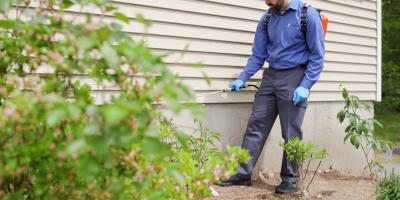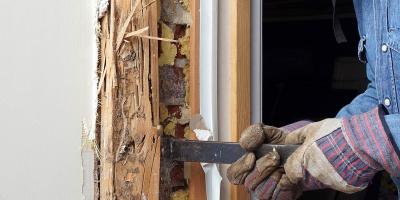Squirrelly Noises in My Attic!

Sounds in the attic are common occurrences in most households and every noise does not require inspection or intervention. So, what types of sounds in the attic should trigger a call for an expert inspection?
Most noises that emanate from the attic are benign and no cause for concern. Many attic noises are generated by the wind, settlement creaking, air handling systems, expansion and contraction of wood frame with change of seasons, debris hitting the roof from overhanging trees, etc. When the noises become a matter of routine or are patterned, that is the time to investigate further.
Attic Noises/Signs of Concern:
- Scratching noises above the ceiling
- Scampering noises across the ceiling
- Scratching noises in the wall voids directly beneath the attic
- Gnawing or grinding sounds
- Heavy thumping
- Localized ceiling staining
- Musky or foul odors
Remember, sounds generated in the attic or within wall voids will be greatly magnified. The scampering of a large beetle or carpenter ants will sound like a mouse. The scurrying of a mouse will sound like a rat or squirrel. Squirrel bounding and running movements sound like a racoon, and so on and so forth.
Scatology:
Scatology is the science of animal scat/excrement identification. If you aren’t too fearful and the access to your attic is safe, then take a quick look to determine if pest activity is the cause of the noises you hear. Wear a particle mask and use a strong flashlight to conduct your cursory inspection. Walking on the joists of an unfloored attic is not a good idea and often leads to serious property damage and bodily injuries.
Animal scats come in all shapes and sizes and can vary in size and coloration within each species depending on the size of the animal and its current diet. Please review the common animal scat pictorial chart for clues. Mouse scat is 1/8-1/4 inches, football-shaped with pointy ends. Rat scat is 1/2-3/4 inches, football-shaped with blunt ends. Bat scat is roughly the same size as mouse droppings or rice grains but disintegrates when handled. Squirrel scat is 3/8 inches, pellet-like with rounded edges. Raccoon scat is tubular shaped and up to 3 inches in length.

Other Signs of Attic Infestation:
- Burrows in the insulation
- Staining on the insulation
- Animal carcasses
- Bats roosting (do not disturb; call JP Wildlife)
- Live birds or rodents
- Nesting material/chewed cardboard, insulation backing, stored materials, etc.
- Acorn or other feed caches
- Gnawed wires (don’t touch…call an electrician)
- Gnawed pipes and wood structure
- Piles of scat/excrement
- Scattered scat/excrement
- Structural damage around soffits, gable vents, roofline, and chimney
Common Attic Dwellers:
- Flying squirrels
- Grey squirrels
- Red squirrels
- Bats
- Deer and white-footed mice
- House mice
- Rats
- Birds
- Raccoons
Most do it yourselfers (DIYs) who take a stab at managing these animal pests without professional engagement will fail. Additionally, dealing with any of these animals on the list without the proper protective gear and knowledge can be harmful to your health and property. All these pests are associated with parasites that can attack humans when their hosts are removed. Most of these pest animals can bite when handled and some are known carriers of rabies.
Removing and handling material contaminated by animal waste is potentially harmful to your health. Wild animal excrement and urine is ladened with bacteria, parasites, and other disease organisms such as histoplasmosis with bird and bat excrement. Most incidences of disease exposure occur from breathing in contaminated airborne microparticles caused by the removal of insulation, excrement piles, cleaning, and construction activities. The use of proper PPE (personal protection equipment) is a must when remediating any attic infestations.
The benefit of possibly saving some money by DIY is not worth the high risk associated with attempts to manage attic infestations. This type of work should be left to licensed and insured professionally trained experts. A knowledgeable wildlife specialist will have the proper state required licensing to do the job. Beyond the license, training and education are the keys to managing attic infestations. Wildlife specialists must be knowledgeable in many areas including construction, general pest control, wildlife rules and regulations, knowledge of each animal group’s biology and behaviors, expert use of ladders and scaffolding, and the safety for self, others, and property.
At JP Pest Services, our wildlife specialists are licensed in each state where they provide services. They are all expertly trained and backed by a team of experienced managers. Before and during the remediation work, safety for self, others, and property carry the highest importance. Wildlife management work requires the use of ladders and working at the heights of the roofline as well as working within the restricted space of attics. Therefore, JP always works with two specialists per job. Rest assured, we are fully insured in the event of a mishap; however, our focus is on accident prevention and safe operations, so mishaps rarely occur.
Contact JP Pest Services today for a quote.



